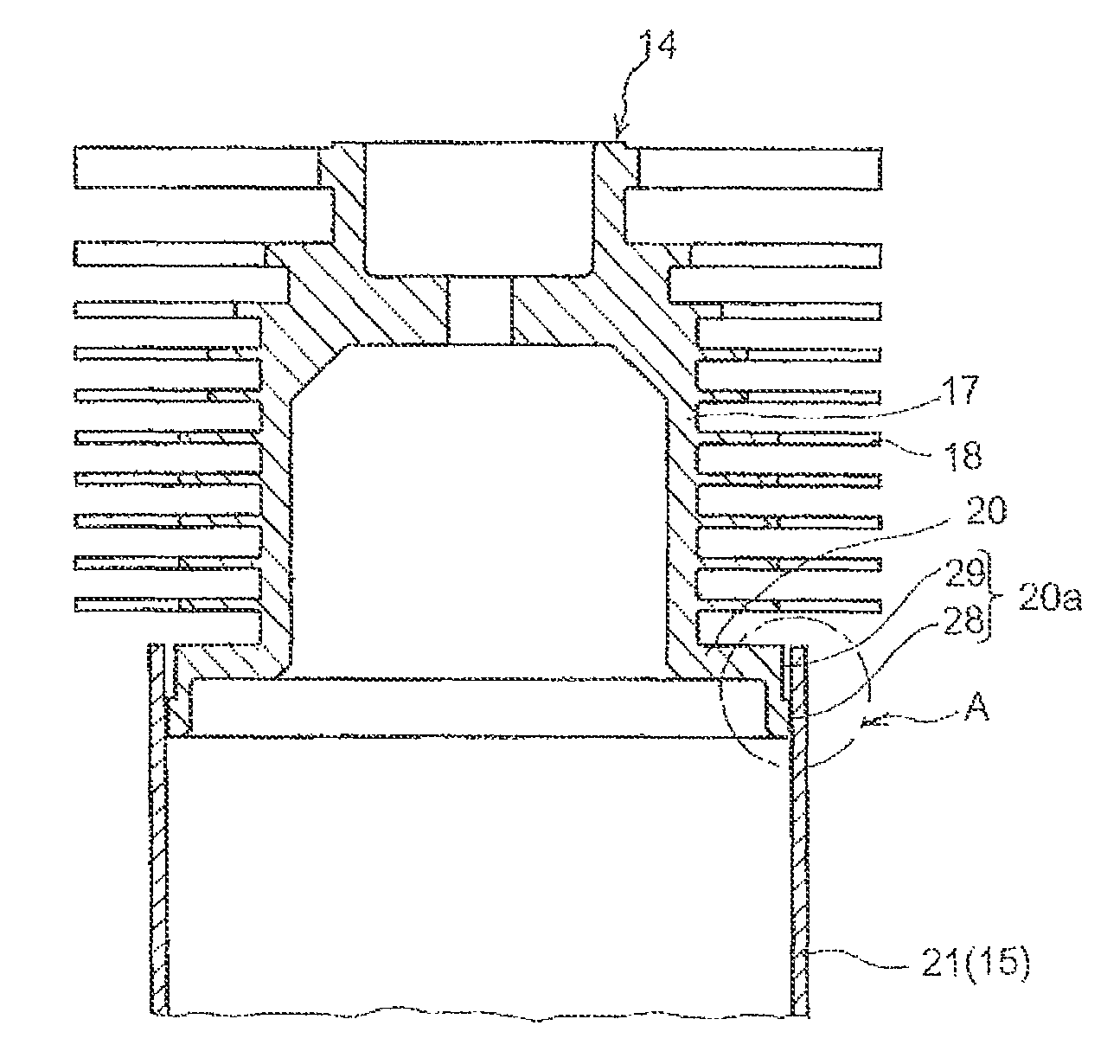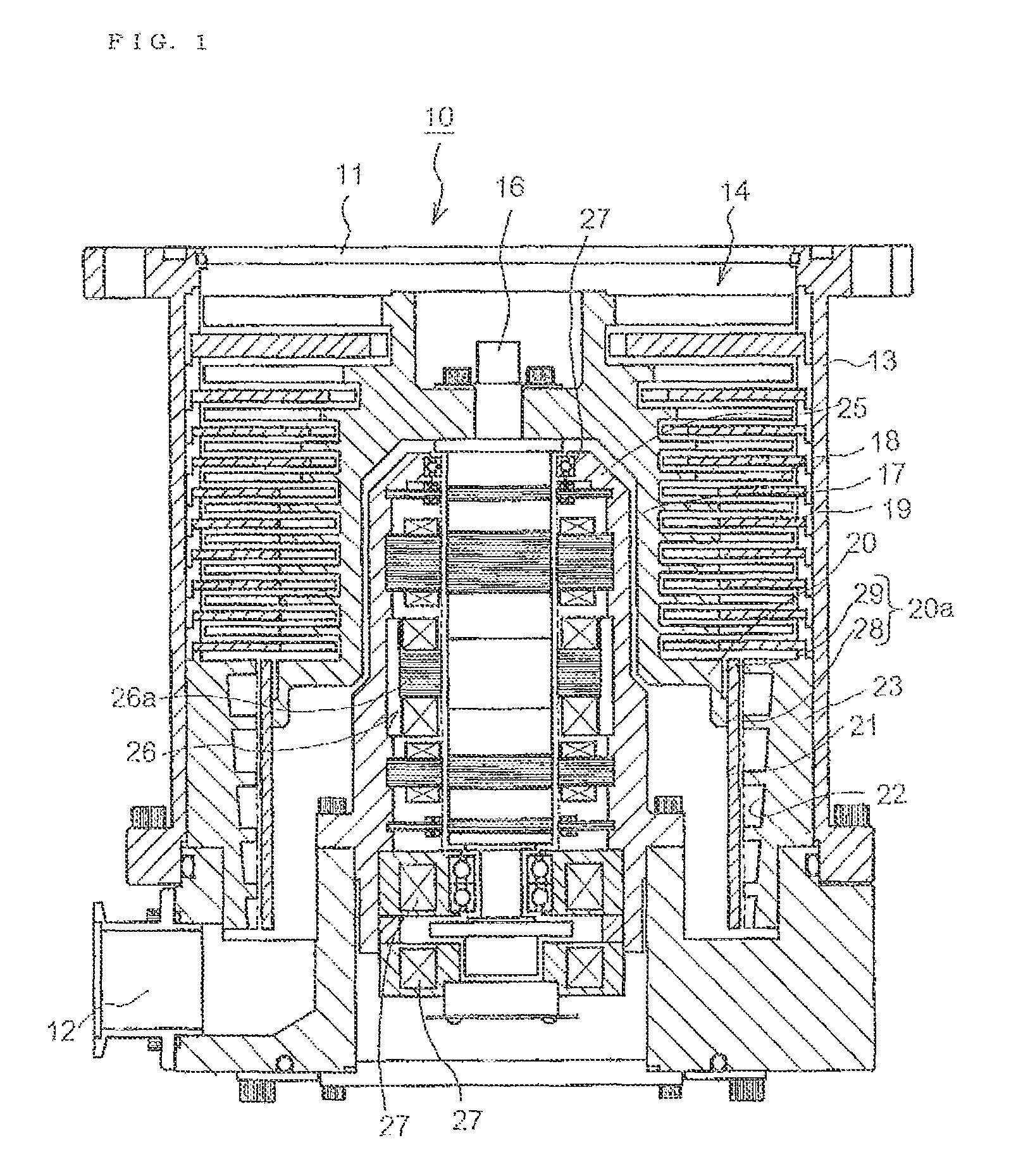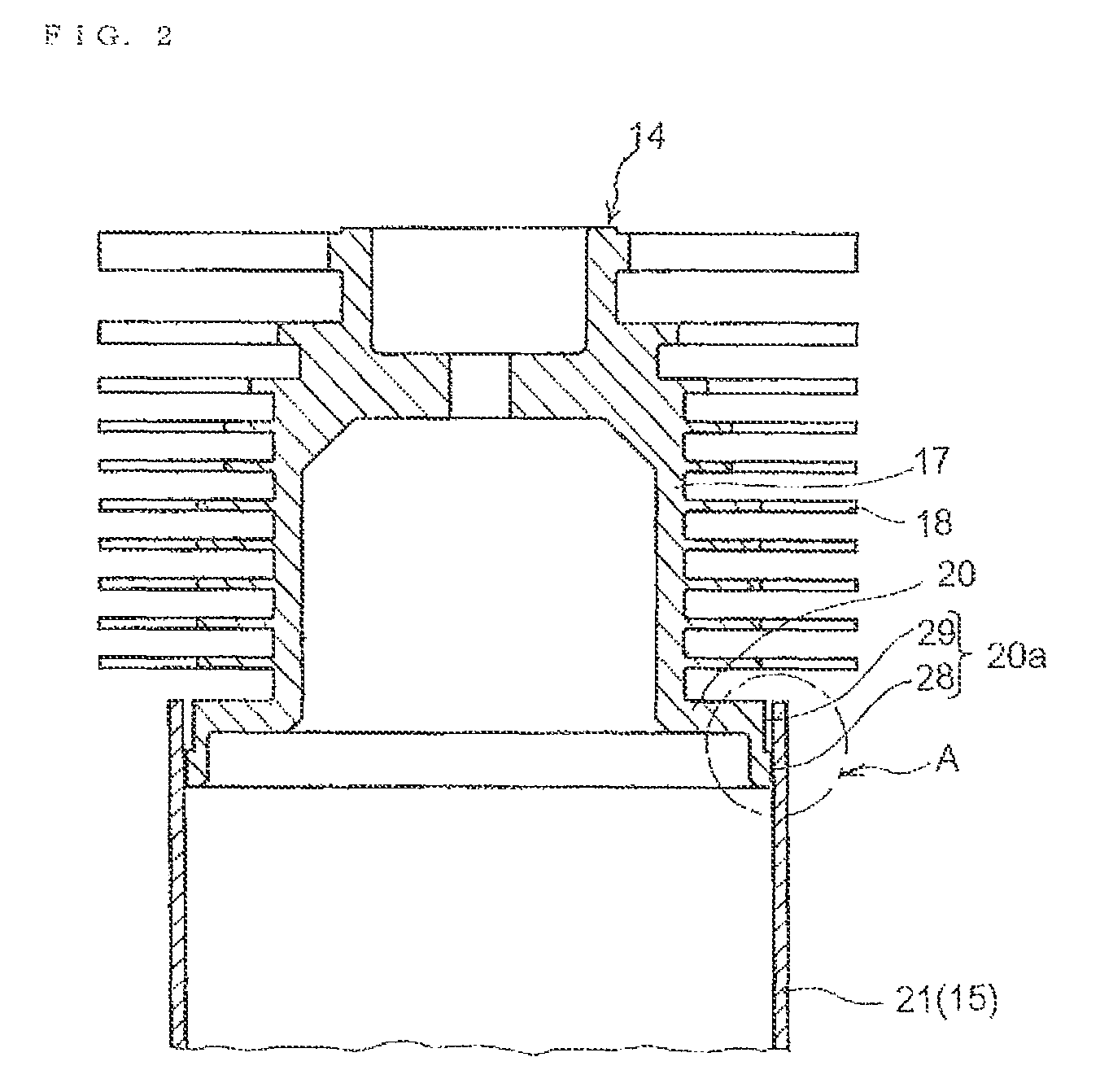Vacuum pump
a vacuum pump and vacuum technology, applied in the field of vacuum pumps, can solve the problems of increasing the number of parts, increasing the number of assembly man-hours, and easy breakage of the portion, and achieve the effect of reducing costs and high loads
- Summary
- Abstract
- Description
- Claims
- Application Information
AI Technical Summary
Benefits of technology
Problems solved by technology
Method used
Image
Examples
Embodiment Construction
[0042]In the present invention, the goal of providing a composite-type vacuum pump that uses a cylindrical rotor obtained through shaping of a fiber-reinforced plastic material, such that the composite-type vacuum pump is strong enough to withstand high loads, and is amenable to reduction in cost, was attained by providing a vacuum pump that comprises a cylindrical rotor that has at least a thread groove pump section or a Goethe pump section, and a rotor that has a turbo-molecular pump section or a vortex pump section or the like, the vacuum pump being configured through joining of part of a side surface of the cylindrical rotor to a joint portion that is provided at an annular-brim portion formed in the rotor, wherein the joint portion is formed, integrally with the annular-brim portion, to an L-shape.
[0043]Embodiments
[0044]Preferred embodiments of the composite-type vacuum pump of the present invention are explained below with reference to accompanying drawings. FIG. 1 and FIG. 2 ...
PUM
 Login to View More
Login to View More Abstract
Description
Claims
Application Information
 Login to View More
Login to View More - R&D
- Intellectual Property
- Life Sciences
- Materials
- Tech Scout
- Unparalleled Data Quality
- Higher Quality Content
- 60% Fewer Hallucinations
Browse by: Latest US Patents, China's latest patents, Technical Efficacy Thesaurus, Application Domain, Technology Topic, Popular Technical Reports.
© 2025 PatSnap. All rights reserved.Legal|Privacy policy|Modern Slavery Act Transparency Statement|Sitemap|About US| Contact US: help@patsnap.com



